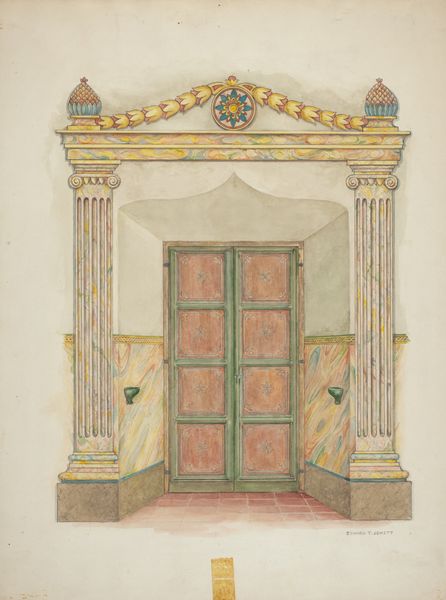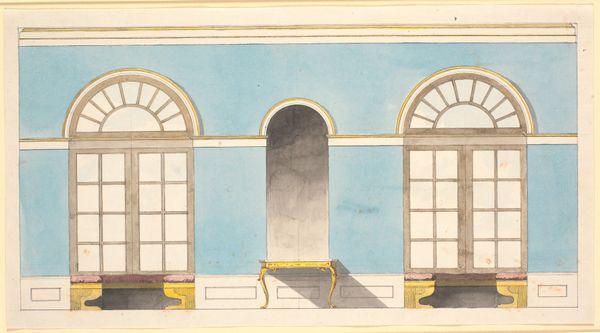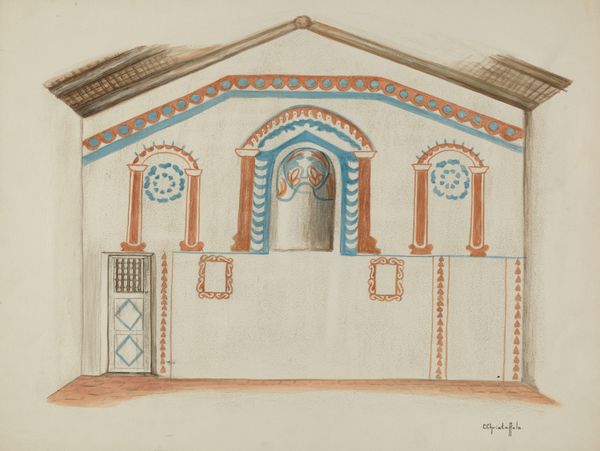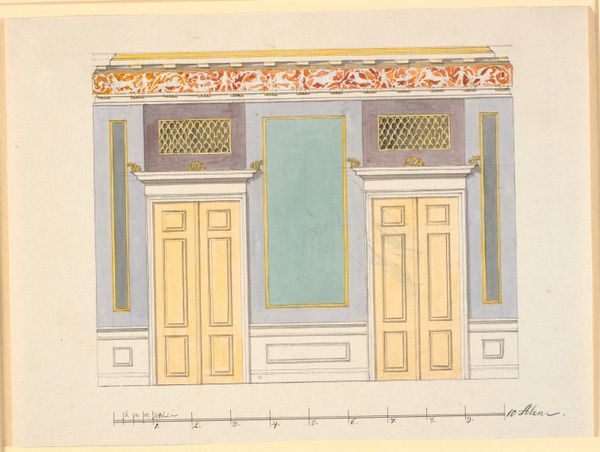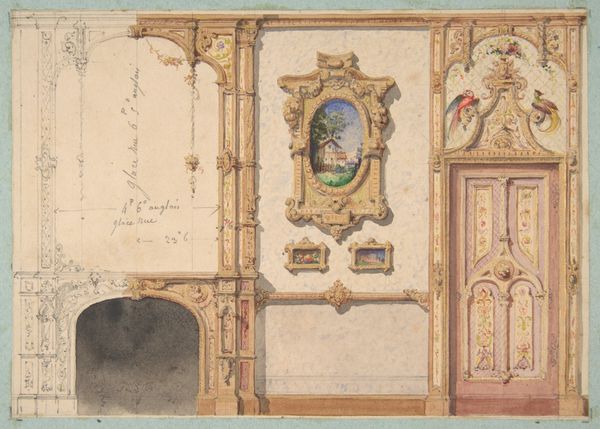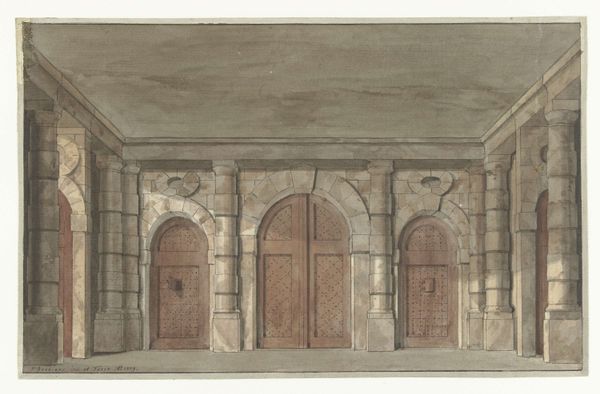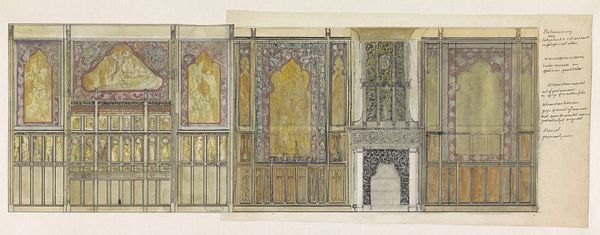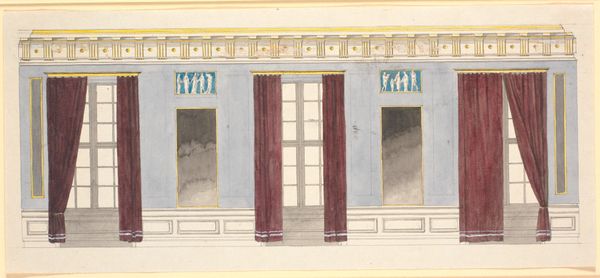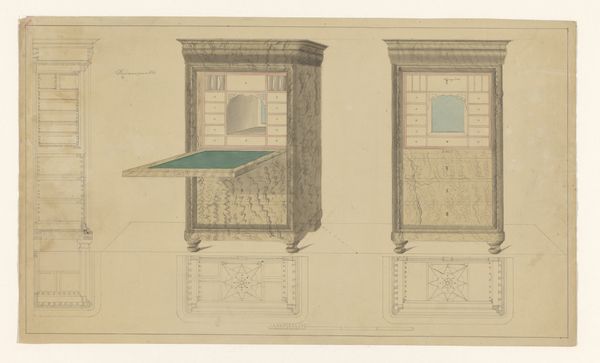
painting, watercolor
#
portrait
#
painting
#
asian-art
#
watercolor
#
genre-painting
#
miniature
#
watercolor
#
realism
Dimensions: Image (sight): 27 1/4 x 19 1/4 in. (69.2 x 48.9 cm) Framed: 36 x 28 in. (91.4 x 71.1 cm)
Copyright: Public Domain
Curator: What strikes me first about this piece, entitled "Palace Interior," dating roughly between 1880 and 1900 and currently residing here at the Metropolitan Museum of Art, is the interplay of presence and absence. We are looking at a watercolor on paper. How do you see it? Editor: I'm immediately caught by this pervasive golden haze! Like walking into a memory, softened and sun-soaked. But a somewhat incomplete one at that... Is it just me, or does the artist present this crowded palace interior, filled with numerous figures, in very sketchy terms? The yellow tent draping creates a sensation like a gilded cage! Curator: It's astute to notice the artist's hand in that tenting effect. You might be touching on several layers of intent and representation, as that stylistic choice appears deliberately designed. The incomplete and suggestive drawing certainly feels meaningful in itself. Are the occupants ghost-like within the image, maybe representing cultural or family lineage, perhaps hinting at traditions observed during the era, all captured through art. Editor: Lineage, definitely! This feels so deliberately staged. The details in the windows above—those complex geometric patterns feel like little keys unlocking hidden stories. Those heavy drapes certainly create separation between viewers and the performance space depicted on the floor below. In this manner, the painter has created a multi-level tableau that emphasizes cultural layers between people within social structures. How brilliant to weave those things together! Curator: Yes, those lattice patterns act as important cultural signals—a visual language denoting power, prestige, and, perhaps, confinement too. This realism, combined with its delicate miniature execution, underscores how private lives became spectacles viewed by unseen audiences. Also consider, how, at its very heart, portraiture embodies the human capacity to create memory in artistic representation, preserving what the creator decides to record for those to come later. Editor: You're right—memory feels crucial. It is akin to holding fragments of the past, precious and fragile. The yellow hue almost gives a photographic feel, reminiscent of sepia tones found on ageing photographs, which allows our minds to place it as not something present day. It definitely captures fleeting moments—glimpses into another world that has all but been lost. It certainly resonates. I feel drawn into a hushed world of rituals witnessed and recorded. Curator: Exactly, and its current placement ensures it stays forever. So much of culture is wrapped up with the visual, the ability to pass from one generation to another the symbolism or artistic intention behind each artistic composition. And there you have it. Editor: An era re-envisioned! Always remember our place and legacy!
Comments
No comments
Be the first to comment and join the conversation on the ultimate creative platform.
